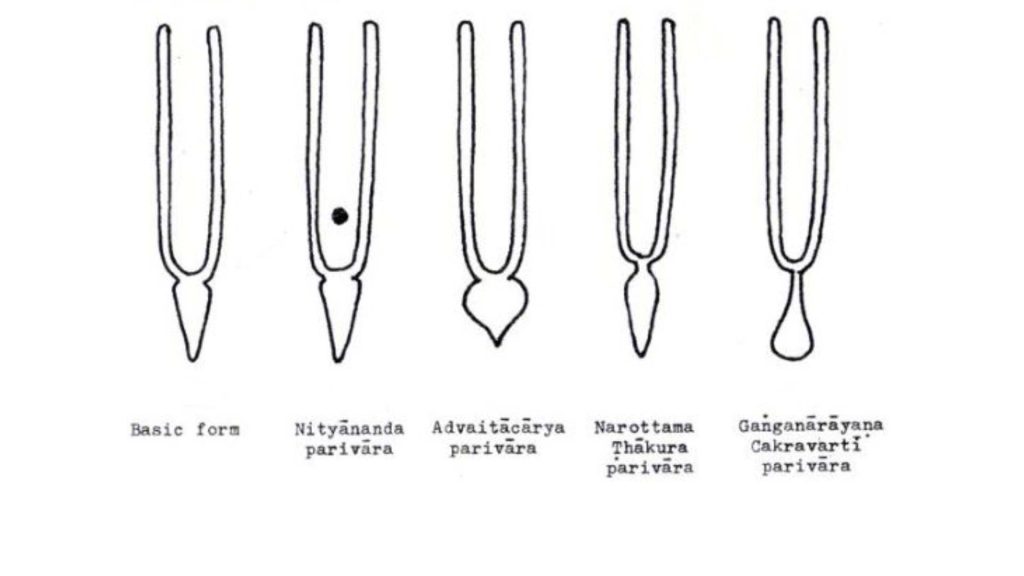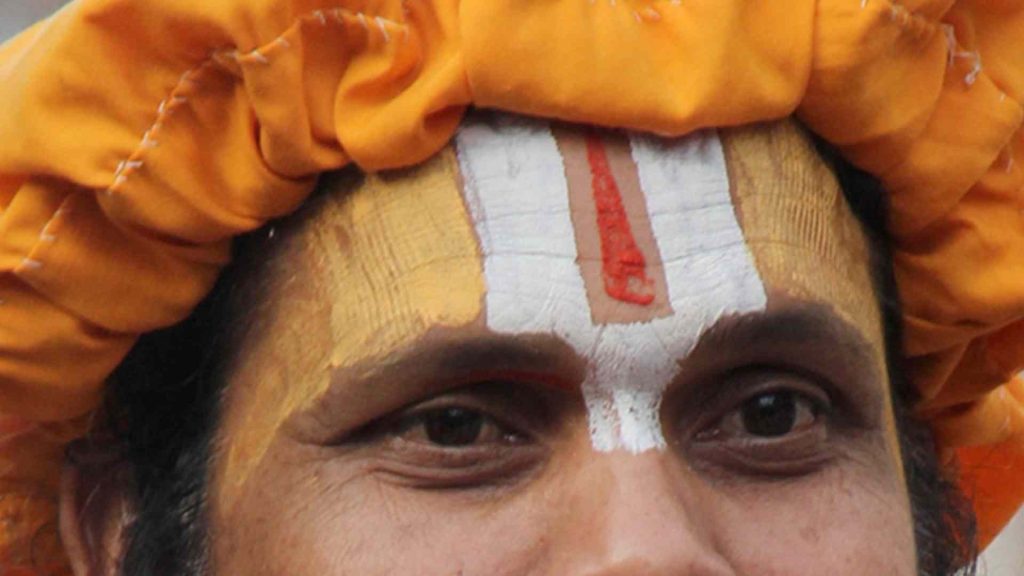Types of Tilak on Forehead: Tradition, Symbolism & More

Types of Tilak on Forehead: The tilak is a traditional Hindu mark applied on the forehead, carrying cultural and religious significance as a symbol of devotion and spiritual beliefs.
Different types of tilak, such as Kumkum and Chandan, have specific meanings and purposes, which we will explore along with their origins and applications in rituals and ceremonies.
Explore the cultural significance of tilaks in Hindu traditions with us.
Types of Tilak on Forehead and Symbolism of Tilak
A tilak is a traditional Hindu mark applied on the forehead, symbolizing spiritual and religious beliefs. The word “tilak” originates from the Sanskrit word “tila,” meaning sesame seed, as sesame seeds are commonly used to make the paste for applying tilak.
The application of tilak in Hinduism holds great symbolism, representing devotion, protection, and connection with divine energies. Wearing a tilak on the forehead symbolizes a commitment to faith and dedication to religious principles.
Various types of tilaks can vary depending on region, community, or occasion. For instance, red tilaks made from kumkum powder symbolize auspiciousness and good fortune, while white sandalwood paste is often used as a base for applying tilaks.
The tilak serves as an identifier within communities and assists in recognizing fellow devotees or members of specific religious groups, in addition to its symbolic significance.
Different Types of Tilak on Forehead in Hinduism and Their Meanings
In Hinduism, different types of tilaks are worn on the forehead. One common type is the bindi, a small dot worn by women between the eyebrows. The bindi symbolizes the third eye and inner wisdom, believed to improve concentration and spiritual awareness.

The chandan tilak is made from sandalwood paste and has a pleasant fragrance. It symbolizes purity, coolness, and tranquility. The chandan tilak is commonly applied during religious ceremonies or auspicious occasions.
The kumkum tilak is a popular forehead mark in Hinduism, made of red vermilion powder applied in the center of the forehead. It symbolizes good fortune, prosperity, and marital bliss. Married women often wear this tilak to show their married status.
The vibhuti tilak is a sacred symbol often made from ash obtained from burnt cow dung or other sacred substances, mixed with water. It symbolizes spirituality, purity, and devotion to God.
Tilak marks are significant symbols within Hindu culture, representing devotion and blessings for adherents who wear them on their foreheads.
It should be mentioned that while these types of tilaks have specific meanings within Hinduism, they are also worn outside of religious contexts for cultural or decorative purposes.
Spiritual and Astrological Benefits of Applying Tilak
Applying tilak on the forehead is a cultural practice in Hinduism with spiritual and astrological significance. The Tilak is thought to activate the ajna chakra, or third eye, enhancing intuition and spiritual awareness. This awakening can lead to a deeper connection with one’s inner self and heightened perception.
Astrology guides the choice of tilak for the forehead based on planetary influences. Each type of tilak is linked to specific planetary energies. By applying the correct tilak, one can balance these energies and invite positive influences. For example, a red kumkum tilak boosts Mars’s energy for courage and determination. Similarly, a yellow chandan tilak taps into Jupiter’s power for wisdom and prosperity.
In addition to its spiritual significance, wearing tilak also has practical benefits. The application of tilak on the forehead is believed to purify the mind, aiding in focus and concentration during meditation or prayer. This practice helps individuals mentally center themselves, allowing for a deeper connection with their higher consciousness.
Applying tilak between the eyebrows is believed to invite divine blessings and symbolizes humility and guidance from higher powers. It is seen as a sacred act that connects individuals with spiritual energies.
Connection with Deity Energies through Different Tilaks
Specific types of tilaks are linked to particular deities in Hinduism. Red symbolizes Devi (Goddess), white is for Lord Vishnu, and yellow is for Lord Krishna. These colors represent the divine energy embodied by each deity. Devotees wear the corresponding tilak to connect more deeply with the energy of that deity.
The choice of tilak color is influenced by personal devotion and the specific deity worshipped. Some individuals may decide to wear multiple tilaks symbolizing different deities based on their spiritual practices and beliefs, enabling them to access various aspects of divinity and connect with different energies.
The wearing of a tilak serves as a physical representation of devotion and is believed to act as a connection between the individual and the divine realm, inviting positive energies into their lives and aligning them with higher consciousness.
The red tilak represents seeking the blessings of Devi for strength, courage, or protection, while the white tilak signifies reverence towards Lord Vishnu’s qualities of preservation or harmony in life.
Shielding from Negative Energies and Medical Reasons for Tilak
Applying tilak on the forehead is a common practice with believed benefits, including creating a protective shield against negative energies and evil forces. This is done with the belief that wearing tilak can help ward off any potential harm or negative influences.

Various types of Tilaks have specific purposes. Vibhuti, made from sacred ash, has antimicrobial properties. Applying Vibhuti on the forehead can help prevent infections. In addition to its spiritual significance, Vibhuti also offers medical benefits.
Chandan (sandalwood paste) is known for its cooling effect on the skin, providing relief from headaches and reducing stress levels. Its soothing properties make it an ideal choice for relaxation and calmness.
Various types of tilaks exist, each having unique qualities and purposes, symbolizing different meanings in various cultures and traditions.
Indications of Sectarian Affiliation and Caste through Tilak
Various sects within Hinduism use distinctive styles of tilaks, which can signify their sectarian affiliation. These marks on the forehead are important in Hindu culture and are commonly worn as a sign of devotion or allegiance to a specific sect or deity.
Followers of Lord Vishnu may wear a tilak with two horizontal lines on their forehead, symbolizing the feet of Lord Vishnu, while devotees of Lord Shiva may wear a vertical line known as a “tripundra” made from sacred ash or sandwood paste.
In certain regions, the shape or pattern of the tilak can also indicate one’s caste or social status, with higher castes often choosing more elaborate designs and colors while lower castes tend to wear simpler tilaks.
The size, color, and placement of the tilak can vary based on cultural customs and regional traditions. Some individuals may prefer larger tilaks that cover a significant portion of their foreheads, while others opt for smaller ones that only occupy a specific point. The selection of red vermillion (kumkum), yellow turmeric (haldi), white sandalwood paste (chandan), or other colors is influenced by personal preferences and religious beliefs.
Regional Variations and Cultural Tapestry of Hindu Tilaks
Hindu tilaks vary in types, reflecting the diverse cultural traditions found across different regions of India. They are characterized by unique designs, colors, and materials. Each region has its own style and cultural significance associated with the application of tilaks.
In South India, a common form of tilak known as “pottu” is a simple red dot worn on the forehead by both men and women. It holds great cultural significance and is believed to symbolize auspiciousness and good fortune.
In other regions, different styles of tilaks can be observed. In North India, a vertical mark made with sandalwood paste or vermilion powder, called “Chandan” or “sindoor,” is common and is often used to symbolize devotion or worship of deities.
Regional variations in tilak designs and materials extend to include differences in materials used, such as turmeric paste being used in some communities instead of sandalwood paste.
The regional variations within Hindu culture showcase traditions, customs, religious beliefs, and social practices across different communities.
Enhancing Spiritual Life and Mindfulness with Tilak
Wearing TIlak on the forehead is a spiritual practice that can help individuals deepen their connection with themselves and the divine.
The application of tilak before prayers or religious rituals is believed to create a sacred atmosphere and enhance the overall experience. Applying tilak on the forehead is considered an auspicious gesture, inviting blessings from deities and invoking their presence during worship. Adorning oneself with tilak can bring a sense of reverence into spiritual practices.
In Hinduism, the forehead is considered the center of consciousness and applying tilak on this part of the body is believed to aid in concentration during meditation or prayer. It is seen as a symbol of devotion and commitment to spirituality.
In Hindu mythology, different types of tilaks symbolize various aspects. For instance, a red dot on the forehead represents Goddess Lakshmi, associated with wealth and prosperity. During festivals or weddings, people may wear intricate tilaks depicting deities or cultural traditions.
Conclusion:
Different types of tilaks on the forehead have deep spiritual and cultural significance in Hinduism. Understanding the tradition and symbolism behind tilak can help in appreciating its meaningful purpose, from warding off negative energies to invoking divine blessings, each type carrying unique significance and benefits.
FAQs:
Ans: Tilak is a traditional Hindu mark applied on the forehead symbolizing devotion and spiritual beliefs. It’s applied to signify a commitment to faith and connection with divine energies.
Ans: Various types include Kumkum, Chandan, and Vibhuti. Each symbolizes aspects like auspiciousness, purity, and spirituality.
Ans: Tilak activates the third eye, enhancing intuition and spiritual awareness. Astrologically, it balances planetary energies for positivity.
Ans: Specific Tilaks are linked to particular deities, allowing devotees to connect deeply with divine energy and seek blessings.
Ans: Tilak indicates sectarian affiliation and caste, reflects regional variations in Hindu culture and enhances spiritual practices and mindfulness.
Read Also: Neech Bhang Raj Yoga – Meaning, Formation, Benefits & More







